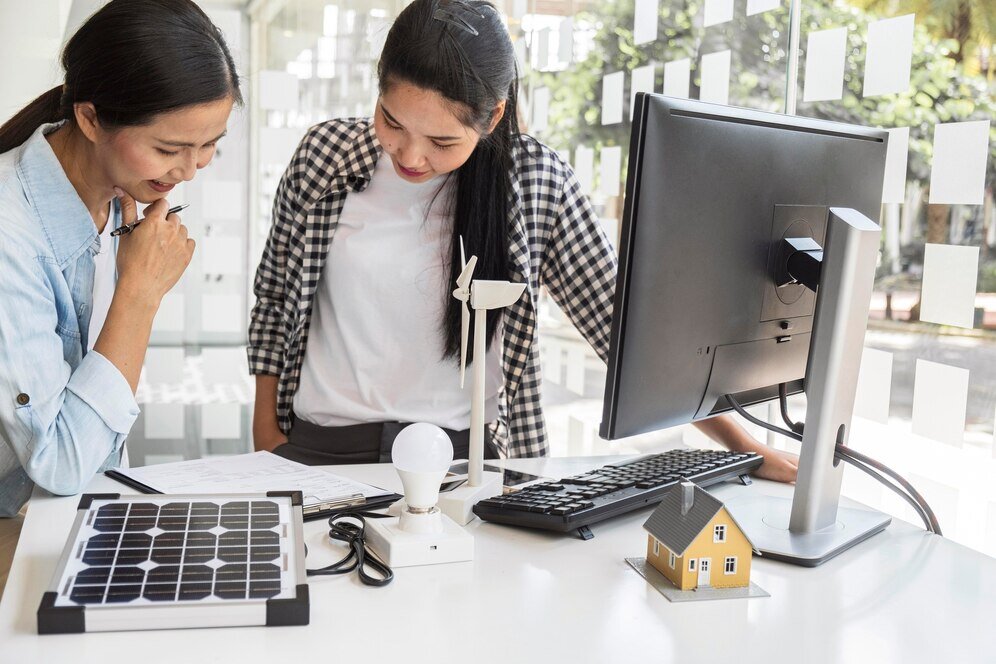Making a home energy efficient isn’t as difficult as it seems. In the modern era, paying attention to energy efficiency becomes essential to reduce global warming and avoid paying more energy bills. Many people opt for smart technology and even consider doing small upgradation such as installing suspended ceilings to make their room insulated.
You can even search for cheap ceiling tiles to find out the best tiles that bring an aesthetic environment while adding insulation to your room. But what are the key steps that you must need to take to bring energy efficiency?
Let’s find out in today’s blog post.
Top Basic Steps to Make Your Home Energy-Efficient
As the weather continues to get warmer and you start spending more time at home, it’s important to make sure your house is energy-efficient. Making a few small changes in your home can help you save money, too. But how?
Here are some quick tips for making your home more energy-efficient:
1. Seal up & Insulate
You can begin insulating with the most basic step: sealing air leaks. In order to reduce heat loss, you’ll need to identify from where your home is losing energy and then install weather-stripping or window kits in these places.
Next up, add insulation in the attic and crawlspace areas of your home to trap warm air inside during winter months (and cool air during summer ones). This will help keep your utility bills low by reducing the amount of heating and cooling required for comfortable living conditions—plus, it will make a huge difference when it comes to preventing mold growth as well!
2. Install a Programmable Thermostat
A programmable thermostat can be a great way to save money, energy, and the environment. It’s easy to install and use. A programmable thermostat allows you to control your home heating and cooling system from anywhere in the world using your smartphone or tablet. This means that you don’t have to physically go into your house every time you want it set differently (or if you forget). You also don’t have to worry about forgetting anything when leaving for work or going on vacation—the temperature will be pre-set when you get home!
Programmable thermostats are very easy to install yourself; most come with clear instructions and pictures, so even if this is something new for you, installing one shouldn’t cause any problems at all!
3. Get a Home Energy Audit
Get a home energy audit. An inspector will come to your house, assess the current state of your home’s energy efficiency, determine the areas in which you can make the most impact, and recommend specific improvements. But what can it cost?
The average price for a single-family home is $350-500, depending on location and complexity. However, certain factors may increase or decrease this amount: for example, if there are several homes within close proximity to one another (like duplexes), then it’s more likely that they’ll be able to share costs among each other if they want to improve their energy efficiency together; thus lowering costs per household overall.
4. Energy-efficient Lighting
The most important thing you can do to make your home more energy-efficient is to replace the light bulbs in your fixtures with ones that use less electricity.
There are two kinds of lighting technology that can help: compact fluorescent lights (CFLs) and light-emitting diodes (LEDs). Both use less energy than incandescent bulbs, which are the standard in most homes today.
CFLs are often seen as the first step on the road toward energy efficiency—they’re much cheaper than LEDs, and they last longer, but they don’t put out as much light or look quite as cool as LEDs do. You’ll also have to buy an adapter if you want to use them in lamps or other fixtures with nonstandard bases.
While on the other hand, LED lights last even longer than CFLs do, produce a better quality of light (they’re bright enough for reading), and don’t contain mercury—but they’re still relatively expensive compared with regular incandescent until recently when prices started falling rapidly.
5. Power strip
A power strip is a device that allows you to plug multiple devices into one outlet. It’s an easy way to avoid overloading outlets because it enables you to control the power flow of multiple devices. Power strips also come in handy when traveling or when using a computer that has a limited number of ports.
6. Upgrade the Air Filter
The second step to cutting down on your energy bills is to change your air filter. Air filters are designed to keep dust and particles from entering the air ducts of your home. If you don’t change them regularly, they could become clogged and reduce the efficiency of your heating system by up to 30%.
The frequency at which you need to change an air filter depends on several factors, including:
- The type of heating system in your home
- The number of people living in the house
- How often do you use certain rooms (like a kitchen)
Conclusion
From sealing up holes in the walls to changing your air filter more often, there are a lot of simple actions that can lead to big savings. If you follow these steps and keep up with them over time (and maybe even share them with others!), you will see positive results from both an environmental standpoint and an economic one!

